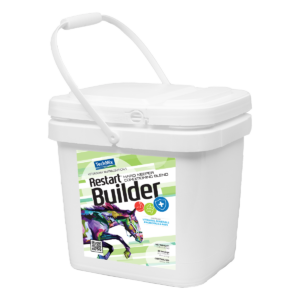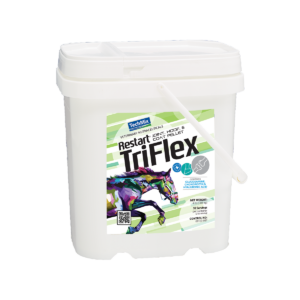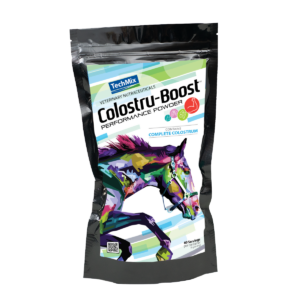June 20, 2025
Clinical Veterinary Perspective-Inflammation
In a clinical setting we address inflammation daily. Animals have inflammation due to a variety of causes such as:
- Traumatic injuries
- Associaton with an infection
- Allergic response
- Post-surgery
- Aging
- Arthritis
- Thermal or chemical injury like frostbite lesions or burns
Inflammation is the first phase of healing so we see it a lot. It’s one of those conditions that has been described since the very early days of documented medicine yet still actively researched. The old Latin terms of the “5 cardinal signs of inflammation” are: rubor (redness), calor (heat), tumor (swelling), dolor (pain), and function laesa (loss of function). Any medical term you’ve heard of ending in “-itis” is referring to inflammation of that part of anatomy (arthritis-joint, tendonitis-tendon, cellulitis-soft tissue, bronchitis-airways, mastitis-udder, metritis-uterus, etc.).
Being the first phase of healing, inflammation in that context is not inherently a bad thing, it’s actually essential. However, when extreme, prolonged, or chronic, intervention is generally thought to be appropriate. Generally, we like to think nature and biology knows best all the time, and maybe that’s true and we still just don’t understand well enough, but it seems there are a few notable processes within the body that just cause self-destruction when left unchecked—inflammation being one. For instance, long-term arthritis causes accelerated cartilage loss, deposition of additional bone around the joint, decreased synovial tissue; several things that lead to destruction of the joint’s function. Other examples could be chronic inflammation in the lungs and airways leading to scar tissue, decreased elasticity of the structures and noticeably decreased respiratory capacity. Add to these allergic inflammatory processes like breaking out in hives or respiratory allergies that result in progressively worsening heaves. All are conditions where the inflammation went on too long, and the process that was initially essential and appropriate shifts from being biology’s solution to the problem, to the primary cause of the downfall.

Aspirin, “bute,” Banamine, Equioxx, dexamethasone, prednisolone, Surpass, DMSO, glucosamine/chondroitin, MSM, HA, ASU, supplement, nutraceutical, NSAID, steroid, joint injection, laser therapy, cold therapy, cold hosing, poultice wrap…head spinning yet? This list of options for treating and preventing inflammation in our horses just goes to show how much attention this topic receives, and it is by no means comprehensive, there are many more currently available and undoubtedly there will be many more to come.
Prevention is always best. Making sure our horses are not living in a pro-inflammatory state all the time, setting themselves up for excessively enthusiastic biologic responses to things like little injuries and allergen exposures is a good start. We know dietary factors play a role: some components may be too starchy or sugary, cause too much acidity, create a fatty acid imbalance, lack antioxidant vitamins and nutrients etc. another exhaustive list of possibilities. Priming their nervous or endocrine systems with constant physical or psychological stress from unnatural husbandry, housing, or any number of other management-related causes will send them into a pro-inflammatory state as well. People like to say that aging is not a disease; probably true, but probably a bit idealistic, because we’ve all seen the problems that elders have that are non-issues in youth. So, starting early, maybe somewhere at the junction of “wasn’t-on-my-radar-yet” and “early signs”, would be a good time to choose a joint supplement containing glucosamine, chondroitin, hyaluronic acid, etc., and hopefully those days of needing to rely on systemic anti-inflammatory medicines, topical NSAIDs, or even having joint injections done are postponed or possibly prevented. When systemic intervention is warranted, choosing one that is most targeted toward the type of inflammation needing treatment and is also safe for longer-term use is imperative. The earliest known anti-inflammatories like aspirin, steroids, and phenylbutazone, while still “oldies-but-goodies”, indiscriminately suppress some of the biological interactions we want to continue. However, some newer generations of anti-inflammatories leave the desired processes intact, only suppressing the damaging inflammation.
In working with TechMix and incorporating their nutraceuticals into my approach to treating inflammation, I like to discuss Restart Builder due to its omega fatty acids and antioxidant vitamin content, a selection from the Colostru-Boost line to leverage some of the anti-inflammatory properties of those bioactive compounds, and certainly Restart Triflex for its glucosamine, chondroitin, hyaluronic acid, and MSM. The formulations of these products provide targeted strategies for managing the inflammation, while simultaneously promoting overall wellness, and we have seen wonderful results in our patients accompanied by very happy clients!


